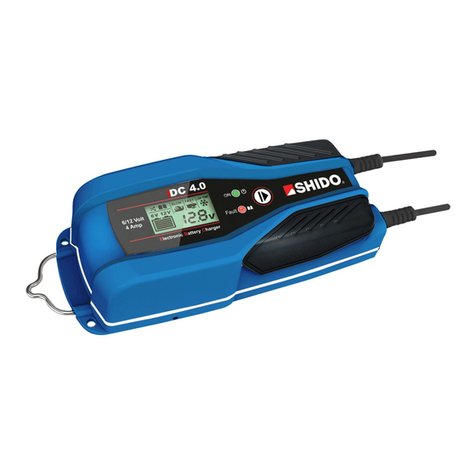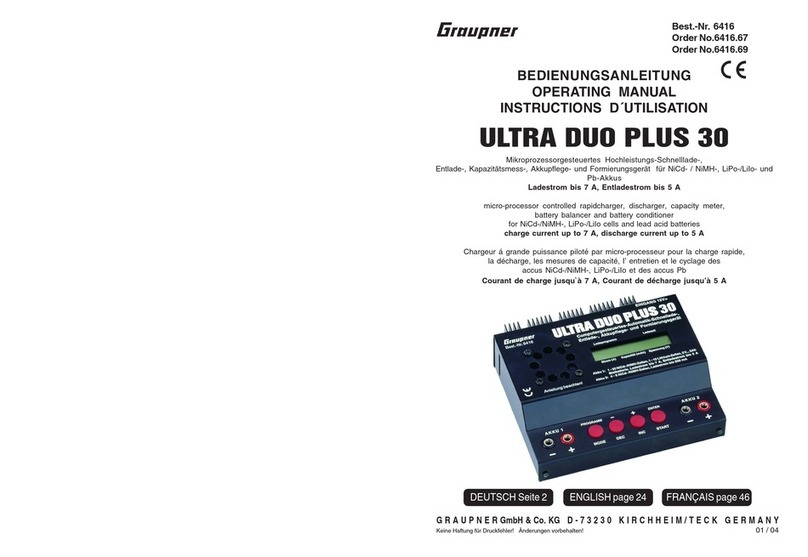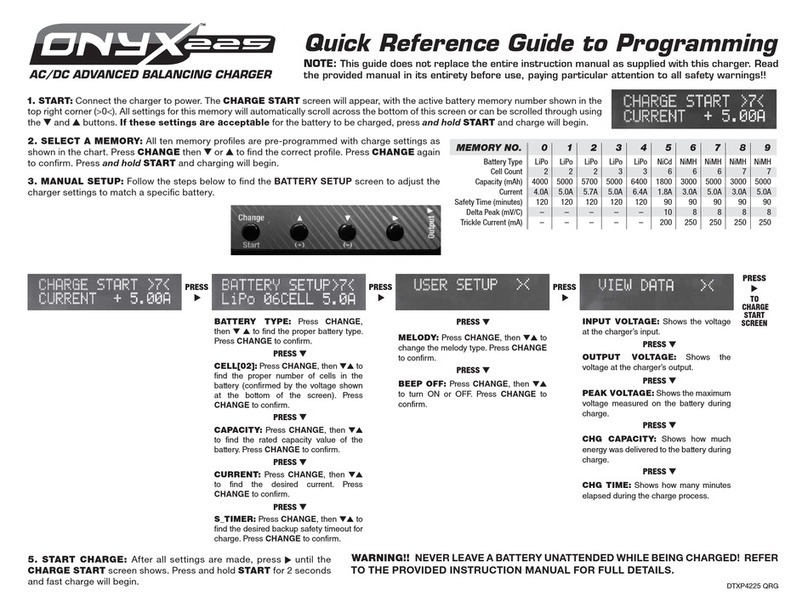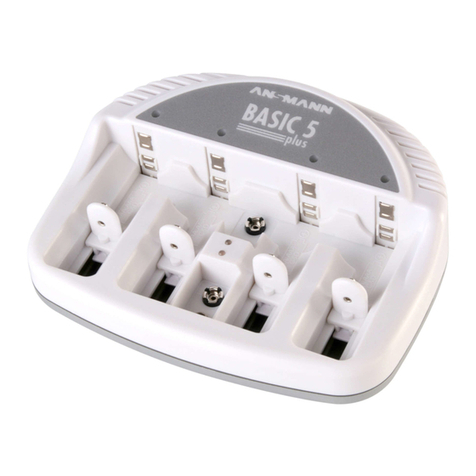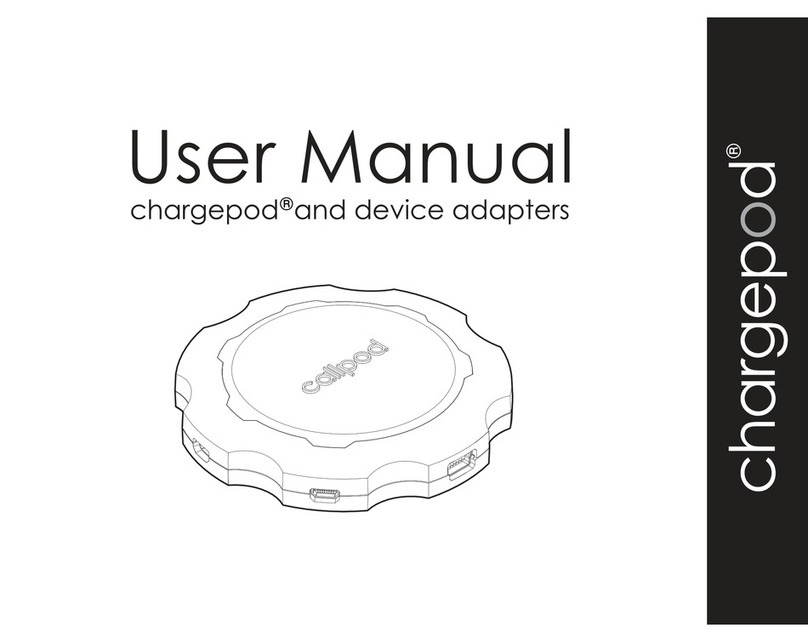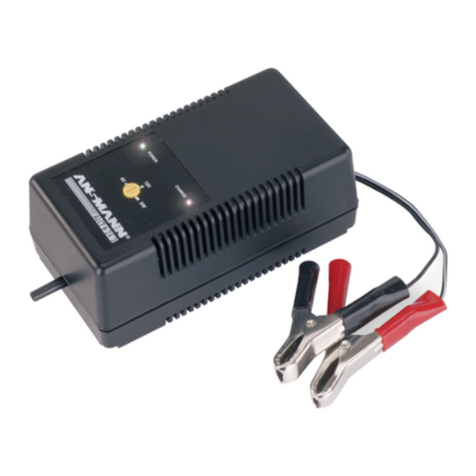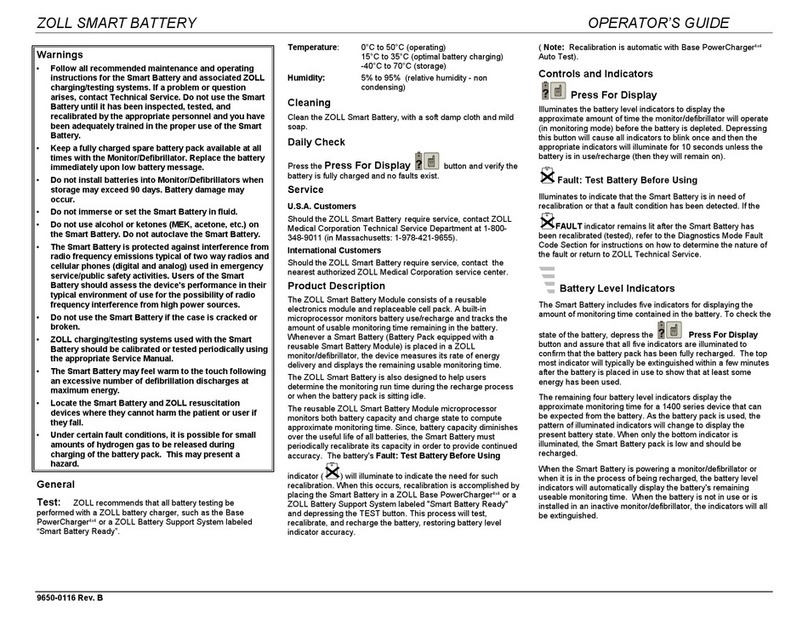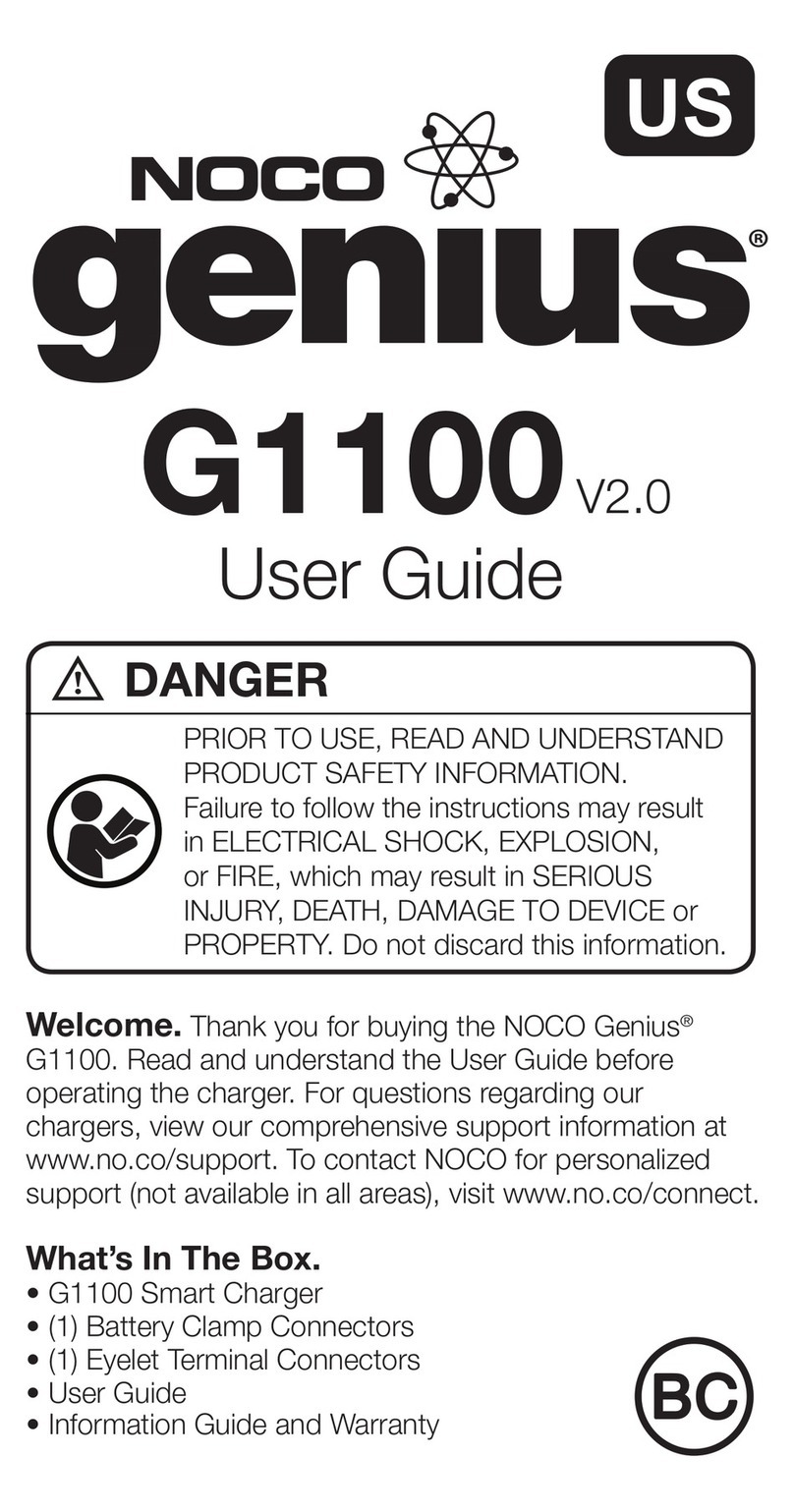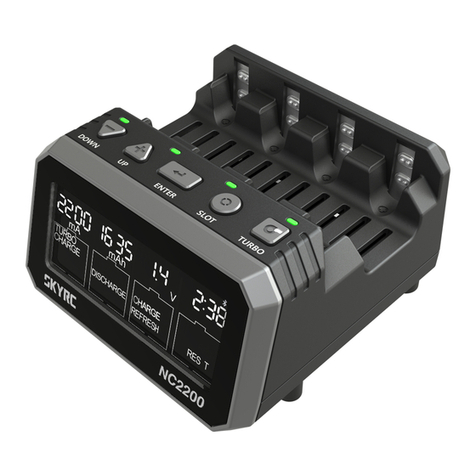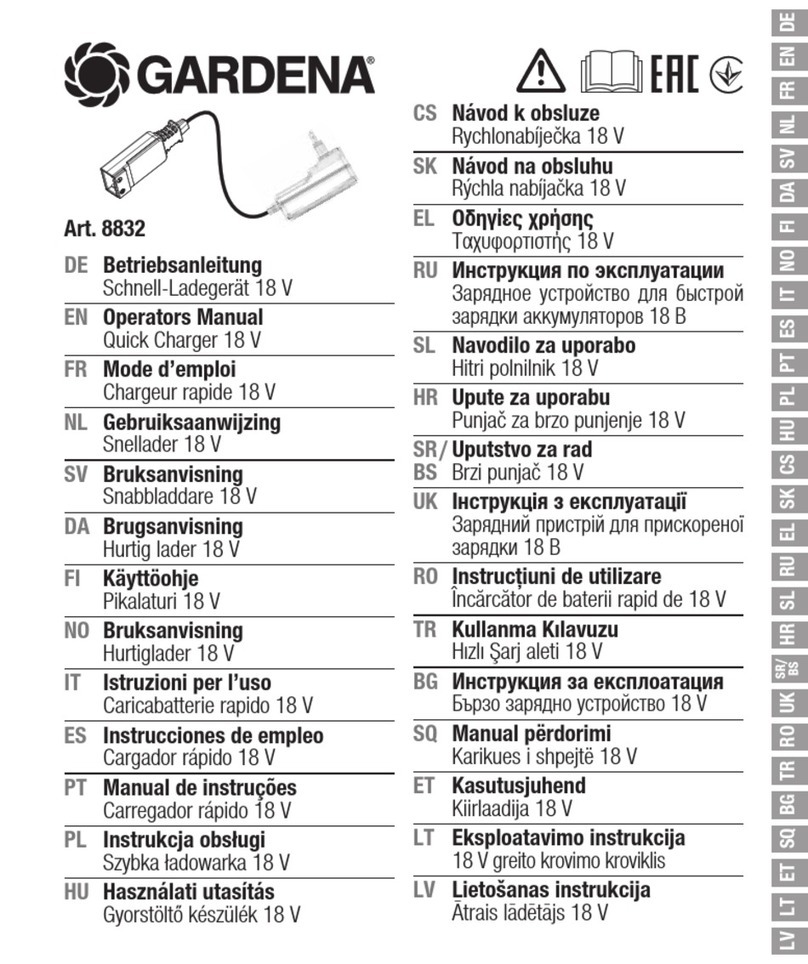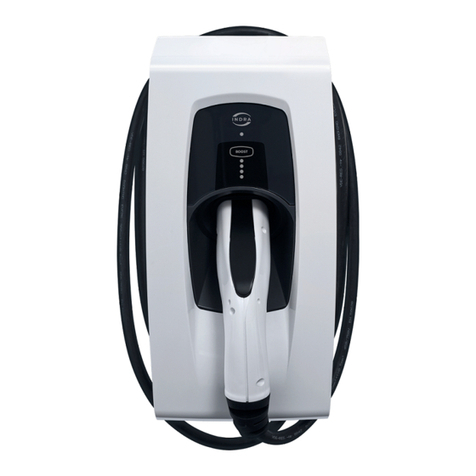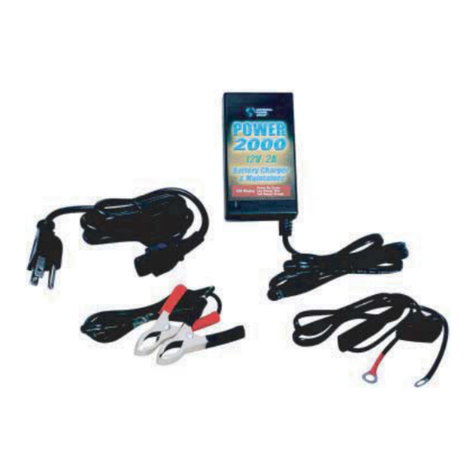Shido DC 8.0 User manual

EN INSTRUCTIONS FOR USE
FR MODE D’EMPLOI
NL GEBRUIKSAANWIJZING
DE GEBRAUCHSANWEISUNG
IT ISTRUZIONI PER L’USO
ES INSTRUCCIONES
PT INSTRUÇÕES DE USO
PL INSTRUKCJA OBSLUGI
HU HASZNÁLATI ÚTMUTATÓ
DA BRUGSANVISNING
SV ANVÄNDNINGSINSTRUKTIONER



EN - INSTRUCTIONS FOR USE
WARNINGS
• The battery charger is designed to charge lead acid batteries and lithium-ion
batteries with LiFePO4 technology. Do not use it for any other purposes. Do not
charge disposable batteries. Do not charge frozen batteries.
• Children should be supervised to ensure that they do not play with the appliance.
This appliance can be used by children aged from 8 years and above and persons
with reduced physical, sensory or mental capabilities or lack of experience and
knowledge if they have been given supervision or instruction concerning use of the
appliance in a safe way and understand the hazards involved. Children shall not
play with the appliance. Cleaning and user maintenance shall not be made by
children without supervision.
• This charger is not intended for use by persons (including children) with
reduced physical, sensory or mental capabilities, or lack of experience and
knowledge, unless they have been given supervision or instruction concerning the
use of the charger by a person responsible for their safety. Children should be
supervised to ensure they do not play with the charger
• Always wear protective goggles and keep your face away from the battery while
connecting and disconnecting it.
• Explosive gas could be given off while the battery is charging; therefore, prevent
the formation of sparks or flames, and do not smoke.
• Charge the battery in well-aired and dry places. Do not expose to rain or snow.
• Make sure the battery charger is disconnected from the mains before
connecting, or disconnecting, the charge leads to/from the battery.
• Never put the battery charger on top of the battery while charging it.
• The fluid in the batteries is corrosive. In case of accidental contact between the
acid and the skin or eyes, rinse with water immediately and seek medical advice.
• Improper use of the battery charger or tampering with the built-in electronic
circuit will invalidate your warranty.
• If the power supply lead of the appliance is damaged, it must be replaced by
authorized technicians, because its replacement requires the use of special tools.
• The appliance must be repaired or serviced by trained personnel only.
• Read the instruction manual carefully before using the battery charger.

Model: 12V 8A, for 5 Ah to 250Ah batteries
This new range of electronic battery chargers is designed to charge all types of lead batteries, conventional batteries
and batteries of the latest generation. These battery chargers are ideal for both everyday use, as a key working tool,
and extensive charging cycles. All charging parameters are set using the charge function key on the control panel.
Depending on the model, you can set:
- the type of battery (STD: wet or gel and AGM: start & stop or spiral), or lithium LiFePO4
- the charging current according to battery capacity
- the work cycle to perform: slow charge, fast charge and low temperature charge; deep recovery charge and power
supply unit as a substitute for the battery
The battery chargers are also equipped with display and LED indicators, which trigger alarms if the polarity is
reversed, the battery is faulty, or the voltage is incorrect.
They are made of insulating material and can be wall-mounted. They ensure a high level of protection against
external agents, overheating and short-circuiting. They are fitted with clamps and connectors for accessories.
CHARGE CYCLES
The charge cycles of the new battery chargers have been specially developed to optimize the charge of all types of
batteries currently available in the market. The numerous constructional technologies of currently available batteries
require different charging curves to ensure correct and complete charging. These battery chargers extend the lives of
your batteries because they provide each with the proper charge cycle.
RECOVERY FUNCTION (RECON): This charging mode is used to recover 12V Wet batteries that have been left
unused for a long time and in which the acid has stratified. This function physically acts on the electrolyte solution of
the battery, so that it mixes again and contrasts stratification.
SUPPLY FUNCTION: The battery chargers have a Supply function (power supply unit). This function is used to keep
a vehicle’s memory banks active while the battery is being changed or whenever the battery is disconnected from the
vehicle’s circuit.
BATTERY TESTS AND ERROR INDICATORS The battery chargers are designed to determine the battery’s
condition before and while charging, and inform about any connection faults between the battery charger and the
battery to charge. An error code can be viewed on the digital display, which allows the fault to be quickly and simply
checked out.
CHARGING
Charging batteries connected to the vehicle
1. Before starting to charge the battery, make sure that the power supply lead is not plugged into the mains.
2. Locate the vehicle’s earthing point, which is normally connected to the negative battery terminal.
3. Charging a battery with negative terminal grounded to the vehicle’s chassis.
• Connect the output lead with red clamp to the positive terminal (+) of the battery.
• Connect the output lead with black clamp to the vehicle’s earthing point, keeping it away from both the battery and
the fuel pipe.
4. Charging a battery with positive terminal grounded to the vehicle’s chassis.
• Connect the output lead with black clamp to the negative terminal (-) of the battery.
• Connect the output lead with red clamp to the vehicle’s earthing point, keeping it away from both the battery and the
fuel pipe.
5. Using eyelet type terminals.
• Connect the output lead with black eyelet to the negative terminal (-) of the battery.
• Connect the output lead with red eyelet to the positive terminal (+) of the battery.
• Make sure that the two eyelets are secured correctly to the terminals of the battery, so that they generate an
optimal electrical contact.
• Secure the ends of the output leads with eyelets firmly in a position of the vehicle away from the fuel pipe (do not
use clips in metal or any other material that could damage the output lead).
• The quick connectors of the leads with eyelet terminals are fitted with protective, insulating, watertight caps.
CAUTION After the battery has been charged, always put the rubber cap on the quick connector.
Charging batteries that are not connected to a vehicle
1. Before starting to charge the battery, check that the power supply lead is not plugged into the mains.
2. Connect the output lead with red clamp to the positive terminal (+) of the battery.
3. Connect the output lead with black clamp to the negative terminal (-) of the battery.
CAUTION Make sure that both clamps of the output leads generate a suitable contact with their corresponding
terminals.

OPERATING THE BATTERY CHARGER
1. Once the output leads have been connected to the battery, plug the power supply lead of the battery charger into
the mains, making sure the voltage matches the rated voltage of the battery charger;
2. With the battery charger in “stand-by” mode and the ON LED lighting up, set the charging parameters suitable for
the type of battery to charge using the key on the control panel. The charging process will start automatically.
Charging parameters that can be set:
2A
Charge for 12V batteries, 5 Ah to 50 Ah
Maintenance charge for 12V batteries, 5 Ah to 80 Ah
Suitable for charging WET or GEL batteries
8A
Charge for 12V batteries, 50 Ah a 80 Ah
Maintenance charge for 12V batteries, 50 Ah a 250Ah
Suitable for charging WET or GEL batteries
2A
Charge for 12V batteries, 5 Ah to 50 Ah
Maintenance charge for 12V batteries, 5 Ah to 80 Ah
Suitable for charging AGM-START&STOP and AGM-SPIRAL or WET batteries with
temperatures below 5 °C
8A
Charge for 12V batteries, 50 Ah a 80 Ah
Maintenance charge for 12V batteries, 50 Ah a 250Ah
Suitable for charging AGM-START&STOP and AGM-SPIRAL or WET batteries with
temperatures below 5 °C
2A
Charge for 12V batteries, 5 Ah to 50 Ah
Maintenance charge for 12V batteries, 5 Ah to 80 Ah
Suitable for charging lithium batteries: LiFePO4 (do not charge other types of lithium batteries)
8A
Charge for 12V batteries, 50 Ah a 80 Ah
Maintenance charge for 12V batteries, 50 Ah a 250Ah
Suitable for charging lithium batteries: LiFePO4 (do not charge other types of lithium batteries)
For WET batteries which have not been used for a long time and in which the acid has stratified.
Caution: Because of the high voltage reached during this charging cycle, the battery recovery
process must be performed with the battery disconnected from the vehicle. Recovery with the
battery connected to the vehicle may result in damage to the vehicle’s electronics.
SUPPLY
Power supply function: 13.8V –5A, max. 80 watts. To activate: connect to the battery
This function is used to keep a vehicle’s memory banks active while the battery is being changed
or whenever the battery is disconnected from the vehicle’s circuit. CAUTION: IN THIS
FUNCTION, THE BATTERY CHARGER IS NOT PROTECTED AGAINST POLARITY
REVERSAL. RISK OF DAMAGE!
Charge indicators:
The battery is charging.
The battery is fully charged (100%); the battery charger will switch to the maintenance step, keeping the
state of
efficiency of the battery constantly monitored, so that it is always at an optimal level of charge.
The display will show the word FULL, which will alternate with the maintenance voltage of the battery
INTERRUPTION OF THE CHARGE CYCLE IN CASE OF MAINS BLACKOUT
In case of blackouts in the 230V mains, the battery charger saves the work cycle it was performing in order to restore
it automatically as soon as the power supply of the 230V mains is restored. This function is crucially important if the
battery charger is used to charge batteries without the operator supervising the cycle; for example, during very long
work cycles (maintenance charges) or when charging overnight (charges for vehicles that need to be charged daily).
(The set parameters are stored for 12 hours; after 12 hours the battery charger will resume charging with the default
parameters).
END-OF-CHARGING
1. Unplug the power supply lead of the battery charger from the mains.
2. Disconnect the output lead with black clamp from either the vehicle’s earthing point or the negative terminal (-) of
the battery.
3. Disconnect the output lead with red clamp from the positive terminal (+) of the battery.

BATTERY TESTS AND ERROR INDICATORS
In cause of faults, the battery tester will display the following indications:
DISPLAY INDICATION
CAUSE
SOLUTION
The clamps of the output leads are not
connected correctly to the battery.
Polarity reversal.
Position the clamps correctly and start
charging the battery again (see section
“Operating the battery charger”).
Battery voltage too high. (You are
attempting to charge a 24V battery).
Check the battery voltage.
The battery may be defective.
Contact your nearest battery service centre.
Battery cannot maintain a good level of
charge.
The battery may be defective. Contact your
nearest battery service centre.
Battery unrecoverable after a complete
desulfurization cycle.
The battery may be defective. Contact your
nearest battery service centre.
Power absorbed in Supply function too
high.
Reduce power absorption.
Battery flat.
Press the button again, to restart charging,
and try to recover the battery.
Leads disconnected, leads short-
circuited.
Position the clamps correctly and start
charging the battery again (see section
“Operating the battery charger”).
Battery completely short-circuited.
The battery may be defective. Contact your
nearest battery service centre.
SAFETY DEVICES
The battery chargers are equipped with safety devices to ensure the utmost safety during use and operation.
• Full protection against sparks
• Protection against short-circuits
• Voltage compensation
• Protection against overheating
• Protection against polarity reversal
• High protection rating against external agents, IP65
MAINTENANCE
When the battery charger is not being used, it must be stored in a dry place to protect it against humidity. Disconnect
the battery charger and use a soft cloth to clean its outer casing.

WARRANTY CONDITIONS
1. This product is warranted by the manufacturer for a period of 24 months from date of purchase, as stated on the
proof of purchase from the dealer.
2. The warranty provides for free repair or replacement of any parts in case of manufacturing and material defects
acknowledged by the manufacturer.
3. Any problems arising from negligence, misuse or tampering with the appliance will void the warranty.
4. The warranty will only be valid if the appliance is repaired by trained personnel authorised by the manufacturer.
5. Incorrect connection to the mains, differences between the power supply voltage and the plate rated voltage of the
battery charger, and line voltage fluctuations caused, for example, by external agents and lightning strikes, will
invalidate the warranty.
6. The warranty certificate must be accompanied by either a valid purchase receipt or a bill of parcel.
7. No liability can be accepted for direct or consequential damages to persons or things of any kind howsoever
arising in connection with the use of battery charger.

FR - MODE D’EMPLOI
AVERTISSEMENTS
• Le chargeur de batterie est destiné à la recharge de batteries au plomb acide et
pour la technologie des batteries Lithium-ion LiFePO4 . Ne pas l’utiliser pour
d’autres destinations. Ne pas charger de batteries de type non rechargeables. Ne
pas charger les batteries congelées.
• Les enfants doivent être surveillés pour s’assurer qu’ils ne jouent pas avec
l’appareil. Cet appareil peut être utilisé par des enfants âgés de 8 ans et plus et les
personnes ayant des capacités ou le manque d’expérience et de connaissances
physiques, sensorielles ou mentales réduites si elles sont sans surveillance ou
instruction concernant l’utilisation de l’appareil en toute sécurité et de comprendre
les risques impliqués. Les enfants ne doivent pas jouer avec l’appareil. Nettoyage
et entretien utilisateur ne doit pas être fait par des enfants sans surveillance.
• Ce chargeur n’est pas destiné à être utilisé par des personnes (enfants compris)
dont les capacités physiques, sensorielles ou mentales, ou le manque d’expérience
et de connaissance, sauf si elles sont sans surveillance ou instruction concernant
l’utilisation du chargeur par une personne responsable de leur sécurité. Les enfants
doivent être surveillés pour s’assurer qu’ils
ne jouent pas avec le chargeur.
• Porter systématiquement des lunettes de protection et éloigner le visage de la
batterie pendant les opérations de branchement et débranchement.
• Lors de la charge de la batterie, il est possible que se produise une émission de
gaz explosifs. Par conséquent éviter la formation d’étincelles ou de flammes. Ne
pas fumer.
• Effectuer la charge dans des milieux correctement aérés et secs: ne pas
exposer à la pluie ou à la neige.
• S’assurer que le chargeur de batterie soit débranché du réseau avant de
brancher ou de débrancher les câbles de charge à la batterie.
• Lors de la charge, ne jamais positionner le chargeur de batterie sur la batterie.
• Le liquide se trouvant dans la batterie est corrosif ; en cas de contact accidentel
de l’acide avec la peau ou les yeux, rincer immédiatement à l’eau et consulter un
médecin.
• L’utilisation impropre du chargeur de batterie ou la manipulation du circuit
électronique se trouvant dans l’appareil entrainent la déchéance de la garantie.
• En cas d’endommagement, le câble d’alimentation de l’appareil doit être
remplacé par des techniciens autorisés car l’intervention requiert l’utilisation
d’outils spéciaux.• Les interventions de réparation ou de maintenance de
l’appareil doivent être effectuées uniquement par un personnel qualifié.
• Utiliser le chargeur de batterie seulement après avoir lu attentivement le mode
d’emploi.

Modèl : 12V 8A, pour batteries de 5 Ah à 250Ah
Cette nouvelle série de chargeurs de batterie électroniques a été conçue pour charger tous les types batteries au
plomb, traditionnels ou de dernière génération. Ces chargeurs de batteries sont particulièrement adaptés à l’emploi
quotidien comme moyen de travail indispensable et aux charges de maintien de longue durée. Tous les paramètres
de charge sont configurés par le biais de la touche des fonctions de charge, situé sur le tableau de commande.
En fonction du modèle, il est possible de régler:
- le type de batterie (STD: wet ou gel et AGM : start & stop ou spiral) ; ou lithium LiFePO4
- le courant de charge en fonction à la capacité de la batterie;
- le cycle de travail à effectuer : charge lente, rapide et climats froids ; charge de réhabilitation profonde et
alimentateur comme remplacement de la batterie
Les appareils sont en outre dotés de signaux sur l’afficheur et Del qui donnent l’alarme en cas d’inversion de polarité,
batterie endommagée et tension erronée.
lls sont réalisés en matériel isolant, ils peuvent être fixés aux parois, ils ont un niveau élevé de protection contre les
agents externes et ils sont protégés contre tout risque de surchauffe ou de court-circuit. Ils sont pourvus de pinces et
de connecteur pour accessoires.
CYCLES DE CHARGE
Les cycles de charge des nouveaux chargeurs de batterie ont été expressément conçus pour optimiser la charge de
n’importe quel type de batterie disponible sur le marché. Les multiples technologies de fabrication des batteries
actuellement dans le commerce nécessitent de différentes cou-rbes de charge pour obtenir des recharges correctes
et complètes. Ces chargeurs de batterie allongent la vie de vos batteries car ils fournissent à chacune le juste cycle
de charge.
FONCTION DE RECOVERY (RECON) Cette modalité de charge permet de réhabiliter les batteries Wet à 12 Volts
demeurées inactives pendant longtemps et qui présentent une stratification de l’acide. Cette fonction agit
physiquement sur la solution d’électrolyte de la batterie, ce qui permet de la mélanger et d’éviter la stratification.
FONCTION SUPPLY Les chargeurs de batterie sont équipés de la fonction Supply (alimentateur). Cette fonction
permet de maintenir activées les mémoires d’un véhicule lors des changements de batterie ou chaque fois que la
batterie est déconnectée du circuit du véhicule.
ANALYSE DE LA BATTERIE ET AVIS D’ERREUR Les chargeurs de batterie sont projetés de sorte à analyser l’état
de la batterie avant et pendant la charge et signaler les éven-tuelles anomalies de branchement entre le chargeur de
batterie et la batterie à charger. Sur l’afficheur numérique, il est possible de lire un code d’erreur, ce qui permet de
vérifier rapidement et simplement l’anomalie intervenue.
CHARGE
Charge de batterie branchée au véhicule.
1. Avant de commencer la charge, vérifier que le câble d’alimentation soit débranché du réseau.
2. Vérifier le pôle correspondant à la masse du véhicule ; généralement reliée à la borne négative.
3. Charge d’une batterie avec borne négative branchée à la masse du véhicule.
• Brancher le conducteur de sortie avec pince rouge au pôle (+) positif de la batterie.
• Brancher le conducteur de sortie avec pince noire à la masse du véhicule, loin de la batterie et du conduit du
carburant.
4. Charge d’une batterie avec borne positive branchée à la masse du véhicule.
• Brancher le conducteur de sortie avec pince noire au pôle (-) négatif de la batterie.
• Brancher le conducteur de sortie avec pince rouge à la masse du véhicule, loin de la batterie et du conduit du
carburant.
5. Utilisation des embouts à oeil
• Brancher le conducteur de sortie avec oeil noir à la borne (-) négative de la batterie.
• Brancher le conducteur de sortie avec oeil rouge à la borne (+) positive de la batterie.
• S’assurer que les deux yeux soient correctement fixés aux bornes de la batterie, garantissant ainsi un contact
électrique optimal.
• Fixer correctement l’extrémité des conducteurs de sortie à oeil sur un point du véhicule loin du conduit du carburant
(ne pas utiliser de colliers en métal ou autre matériel susceptible d’abimer le câble de sortie).
• Le connecteur rapide des conducteurs avec embouts à oeil est doté de capuchon isolant de protection étanche.
ATTENTION Mettre systématiquement le capuchon en caoutchouc sur le connecteur rapide à la fin de la charge.
COMMENT UTILISER LE CHARGEUR DE BATTERIE
1. Une fois les câbles des conducteurs de sortie branchés à la batterie, s’assurer que la tension corresponde à la
tension nominale du chargeur de batterie (230V-50Hz) ;
2. Avec le chargeur de batterie en modalité “stand-by” Del ON activé, régler les paramètres de charge appropriés au
type de batterie à charger au moyen des touches situées sur le tableau de commande.

Paramètres de charge réglables:
2A
Charge pour batteries à 12 V de 5 Ah à 50 Ah
Maintien pour batteries à 12 V de 5 Ah à 80 Ah
Indiqué pour charge de batteries WET ou GEL
8A
Charge pour batteries à 12 V de 50 Ah à 80 Ah
Maintien pour batteries à 12 V de 50 Ah à 250Ah
Indiqué pour charge de batteries WET ou GEL
2A
Charge pour batteries à 12 V de 5 Ah à 50 Ah
Maintien pour batteries à 12 V de 5 Ah à 80 Ah
Indiqué pour charge de batteries AGM-START&STOP et AGM-SPIRAL ou WET avec
températures inférieures à 5 °C
8A
Charge pour batteries à 12 V de 50 Ah à 80 Ah
Maintien pour batteries à 12 V de 50 Ah à 250Ah
Indiqué pour charge de batteries AGM-START&STOP et AGM-SPIRAL ou WET avec
températures inférieures à 5 °C
2A
Charge pour batteries à 12 V de 5 Ah à 50 Ah
Maintien pour batteries à 12 V de 5 Ah à 80 Ah
Adapté pour la recharge de batterie Lithium LiFePO4 (ne pas charger d’autres types de batteries
lithium)
8A
Charge pour batteries à 12 V de 50 Ah à 80 Ah
Maintien pour batteries à 12 V de 50 Ah à 250Ah
Adapté pour la recharge de batterie Lithium LiFePO4 (ne pas charger d’autres types de batteries
lithium)
Pour batteries WET longuement inactives et qui présentent une stratification de l’acide.
Attention: à cause de la haute tension que l’on atteint pendant ce cycle de charge, il faut
effectuer la réhabilitation avec batterie débranchée du véhicule. Une réhabilitation avec batterie
branchée au véhicule pourrait provoquer des dommages à l’électronique de bord.
SUPPLY
Fonction de l’alimentateur : 13,8 V – 5A, max 80 Watt. Pour activer: connectez-vous à la batterie
Cette fonction permet de maintenir actives les mémoires d’un véhicule pendant les changements
de batterie ou dans tous les cas où la batterie est débranchée du circuit du véhicule.
ATTENTION: AVEC CETTE FONCTION, LE CHARGEUR DE BATTERIE N’EST PAS
PROTÉGÉ CONTRE L’INVERSION DE POLARITÉ. RISQUE D’ENDOMMAGEMENT
Indicateurs de charge:
Batterie en phase de charge.
Del vert clignotant.
La batterie est chargée à 100 %, à partir de ce moment le chargeur de batterie entrera dans la
phase de maintien et surveillera constamment l’état d’efficience de la batterie, en faisant en sorte
de la garder en permanence à un niveau de charge optimal.
Del vert fixeIndicateurs
INTERRUPTION DU CYCLE DE CHARGE EN CAS DE COUPURE DE COURANT
En cas de coupure du courant électrique à 230 V, le chargeur de batterie mémorise le cycle de travail qu’il était en
train de suivre de manière à pouvoir le reprendre automatiquement au retour du courant à 230 Volts. Cette fonction
est fondamentale si le chargeur de batterie accomplit des cycles de charge en absence d’opérateur ; par exemple,
pendant des cycles de travail très longs (charges de maintien) ou des cycles nocturnes (charges pour des moyens
qui nécessitent de cycles de charge quotidiens).
CHARGE ACHEVÉE
1. Débrancher le câble d’alimentation de l’appareil de la prise de courant.
2. Débrancher le connecteur de sortie avec pince noire de la masse du véhicule ou de la borne négative (-) de la
batterie.
3. Débrancher le conducteur de sortie avec pince rouge du pôle (+) positif de la batterie.

ANALYSE DE LA BATTERIE ET AVIS D’ERREURS
En cas d’anomalie, le chargeur de batterie pourra signaler les indications suivantes:
SIGNAL AFFICHEUR
CAUSE
SOLUTION
Les pinces des conducteurs de sortie sont
branchées de manière incorrecte à la
batte-rie. Inversion de polarité.
Positionner correctement les pinces
et reprendre la charge de la batterie
(consulter le paragraphe “Utiliser le
chargeur de batterie”).
Batterie avec tension trop élevée.
(Tentative de charger une batterie de 24
Volts).
Vérifier la tension de la batterie.
La batterie peut être défectueuse.
Consulter le Service après-vente de
la batterie le plus proche
La batterie n'est pas en mesure de
maintenir un bon niveau de charge.
La batterie peut être défectueuse.
Consulter le Service après-vente de
la batterie le plus proche
Réhabilitation batterie non réussie après
un cycle complet de désulphatation.
La batterie peut être défectueuse.
Consulter le Service après-vente de
la batterie le plus proche
Le courant absorbé en fonction "supply"
est trop élevé
Réduire l'absorption du courant.
Batterie très déchargée.
Appuyer de nouveau sur la
touche pour faire repartir la
charge et essayer de récupérer la
batterie.
Câbles débranchés, câbles en court-
circuit
Positionner correctement les pinces
et reprendre la charge de la batterie
(consulter le paragraphe “Utiliser le
chargeur de batterie”).
Batterie complètement en court-circuit.
La batterie peut être défectueuse.
Consulter le Service après-vente de
la batterie le plus proche.
SYSTÈMES DE PROTECTION
Les chargeurs de batteries Beta sont équipés d’une série de systèmes de protection qui garantissent une sécurité
optimale lors de l’utilisation et du fonctionnement de l’appareil.
• Protection complète contre les étincelles
• Protection contre les courts-circuits
• Compensation de la tension
• Protection contre la surchauffe
• Protection contre l’inversion de polarité
• Haut niveau de protection contre les agents externes IP65
MAINTENANCE
Lorsque le chargeur de batterie n’est pas utilisé, il doit être rangé dans un endroit sec, à l’abri de l’humidité. Pour le
nettoyage du corps extérieur du chargeur de batterie, débrancher l’appareil et utiliser un chiffon souple.
CONDITIONS DE GARANTIE
1. Le fabricant se porte garant du bon fonctionnement du produit pour une période de 24 mois à compter de la date
d’achat indiquée sur le ticket de caisse délivré par le vendeur au moment de la vente.
2. La garantie prévoit la réparation ou le remplacement gratuit des composants de l’appareil reconnus défectueux
par la société quant à la fabrication ou la nature des matériaux.
3. Les inconvénients dérivant de négligence, mauvaise utilisation, manipulation de l’appareil entrainent la déchéance
de la garantie.

4. Par ailleurs, la garantie déchoit en cas de réparation de l’appareil de la part d’un personnel non qualifié et non
autorisé par le fabricant.
5. Le branchement incorrect au courant électrique, le non-respect de la tension d’alimentation par rapport à la
tension nominale indiquée sur la plaque de l’appareil et les variations de tension de ligne causées par des agents
extérieurs, foudre ou autres comportent l’annulation de la garantie.
6. Le certificat de garantie est valable uniquement s’il est accompagné du ticket de caisse ou d’un bordereau de
livraison.
7. Nous déclinons toute responsabilité pour tous les dommages directs ou indirects de toute nature causés aux
personnes ou aux biens dus à l’utilisation ou à l’interruption d’utilisation de l’appareil.

NL –GEBRUIKSAANWIJZING
WAARSCHUWINGEN
•De acculader is alleen bestemd voor het opladen van loodzuur accu’s en
voor lithium-ion-accu’s met LiFePO4 technolgie. Niet voor andere
doeleinden gebruiken. Laad geen accu’s van het niet oplaadbare type op.
Laad geen bevroren accu’s op.
•Kinderen moeten onder toezicht staan om te verzekeren dat ze niet met het
apparaat spelen. Dit apparaat kan worden gebruikt door kinderen ouder dan 8
jaar en personen die fysiek, zintuiglijk of mentaal gehandicapt zijn of niet over
ervaring of kennis beschikken, op voorwaarde dat ze toezicht of instructie
hebben gekregen in het veilige gebruik van het apparaat en ze de betreffende
gevaren begrijpen. Kinderen mogen niet met het apparaat spelen. Reiniging en
onderhoud door de gebruiker mogen niet door kinderen worden uitgevoerd
zonder toezicht.
•Deze oplader is niet bedoeld voor gebruik door personen (inclusief kinderen) met
een lichamelijke, zintuiglijke of verstandelijke handicap, of die geen ervaring of
kennis ervan hebben, tenzij ze onder toezicht staan of aanwijzingen over het
gebruik van de oplader hebben gekregen van een persoon die verantwoordelijk
is voor hun veiligheid. Kinderen moeten onder toezicht staan om te verzekeren
dat ze niet met de oplader spelen
•Draag altijd een beschermende bril en houd het gezicht uit de buurt van de
accu tijdens het aansluiten en loskoppelen.
•Tijdens het opladen van de accu kunnen explosieve gassen vrijkomen. Zorg
dus dat er geen vonken of vlammen ontstaan en rook niet.
•Laad de accu in een goed geventileerde en droge ruimte op: stel hem niet
bloot aan regen of sneeuw.
•Controleer of de acculader van het elektriciteitsnet is gekoppeld voordat u de
laadkabels op de accu aansluit.
•Zet de acculader tijdens het opladen nooit op de accu.
•In de accu zit een bijtende vloeistof. Indien die per ongeluk in aanraking komt
met de huid of de ogen moeten deze onmiddellijk met water worden
afgespoeld en moet een arts worden geraadpleegd.
•Door een oneigenlijk gebruik van de acculader of het knoeien met het
elektronisch circuit in het apparaat vervalt de garantie.
•Wanneer de stroomkabel van het apparaat beschadigd is, moet het door
erkende vakmensen worden vervangen, omdat hier speciaal gereedschap
voor nodig is.
•Reparaties of onderhoud van het apparaat mogen alleen door vakmensen
wordenverricht.
•Gebruik de acculader alleen na de handleiding aandachtig te hebben
doorgelezen.

Modellen: 12V 8A, voor accu’s van 5 Ah tot 250Ah
Dezenieuweserie elektronische acculadersis ontwikkeldom allesoorten loodaccu’s, traditioneleaccu’s en laatste
generatie accu’s op te laden. Deze acculaders zijn bijzonder geschikt om dagelijks te worden gebruikt als
onmisbaar hulpmiddel en als langdurige druppellader.
Alle laadparameters worden ingesteld met detoetsvan delaadfuncties, die zich op het bedieningspaneel bevindt.
Afhankelijk van het model kan het volgende wordeningesteld:
-het type accu (STD: nat of gel enAGM: start & stop of spiral), lithiumbatterijen: LiFePO4
-de laadstroom op grond van hetaccuvermogen
- de werkcyclus die moet worden verricht: langzaam laden, snelladen en koud klimaat; laden van een uitgeputte
accu en stroomvoorziening ter vervanging van de accu
Deapparaten zijn verder voorzien van meldingen op het display en leds die alarm slaan bij polariteitinversie, een
defecte accu en een verkeerde spanning.
Ze zijn van gemaakt van isolerend materiaal, met mogelijkheid tot muurbevestiging, hebben een hoge
beschermingsgraad tegen invloeden van buitenaf en zijn beschermd tegen oververhitting en kortsluiting. Ze zijn
voorzien van klemmen en connector voor accessoires.
OPLAADCYCLI
De oplaadcycli van de nieuwe acculaders zijn speciaal ontwikkeld om het laden van alle typen accu’s te
optimaliseren, die op de markt aanwezig zijn. De talrijke fabricagetechnologieën van de accu’s die momenteel in
de handel zijn, hebben voor een correcte en volledige lading verschillende laadcurves nodig. Deze acculaders
verlengen de levensduurvan uw accu’s, omdatze elke accu de juiste oplaadcyclus bieden.
RECOVERY FUNCTIE (RECON): met deze laadmodus kunnen natte accu’s van 12Volt, die lang niet zijn gebruikt
en stratificatie van het zuur vertonen, worden opgeladen. Deze functie behandelt de elektrolytoplossing van de
accu, waarbij die opnieuw wordt gemengd en de stratificatie ongedaan wordt gemaakt.
SUPPLY FUNCTIE: De acculaders zijn voorzien van de Supply functie (voedingseenheid). Deze functie maakt
het mogelijk de geheugens van een voertuig actief te houden tijdens het vervangen van de accu of in alle gevallen
waarin de accu wordt losgekoppeld van het circuit van het voertuig.
ANALYSE VAN DE ACCU EN FOUTMELDINGEN De acculaders zijn zodanig ontworpen dat ze de staat van de
accu voor en na het opladen analyseren. Ze melden eventuele storingen in de verbinding tussen de acculader en
de accu die moet worden opgeladen. Op het digitale display kan een foutcode worden weergegeven, zodat de
storing die zich heeft voorgedaan snel en eenvoudig kan worden gecontroleerd.
OPLADEN
Accu’s opladen die op het voertuig zijn aangesloten.
1.Voordat u met opladen begint, controleert u of de stroomkabel van het elektriciteitsnet is gekoppeld.
2.Zoek de pool die overeenstemt met de massa van het voertuig. Over het algemeen is die op de negatieve klem
aangesloten.
3.Een accu opladen met de negatieve klem op de massa van het voertuigaangesloten.
•Sluit de uitgangsgeleider met de rode klem aan op de positieve pool (+) van deaccu.
•Sluit de uitgangsgeleider met de zwarte klem aan op de massa van het voertuig, ver van de accu en de
brandstofleiding
4.Een accu opladen met de positieve klem op de massa van het voertuigaangesloten.
•Sluit de uitgangsgeleider met de zwarte klem aan op de negatieve pool (-) van deaccu.
•Sluit de uitgangsgeleider met de rode klem aan op de massa van het voertuig, ver van de accu en de
brandstofleiding
5.Ringkabelschoenen gebruiken
•Sluit de uitgangsgeleider met het zwarte oog aan op de negatieve pool (-) van deaccu.
•Sluit de uitgangsgeleider met het rode oog aan op de positieve pool (+) van deaccu.
•Controleerofdetwee ogen goed aan deklemmenvan deaccu zijn bevestigd eneen optimaal elektrisch contact
garanderen.
•Bevestig het uiteinde van de uitgangsgeleiders met ogen goed op een punt van het voertuig ver van de
brandstofleiding (gebruik geen metalen kabelbinders of ander materiaal dat de uitgangskabel kan beschadigen).
•De snelkoppeling van de geleiders met oog is voorzien van een isolerend hermetischbeschermdopje.
LET OP Doe na het opladen altijd het rubberen dopje op de snelkoppeling.
DE ACCULADER GEBRUIKEN
1.Zodra de kabels van de uitgangsgeleiders op de accu zijn aangesloten, doet u de stroomkabel van het
apparaat in het stopcontact. Controleer of de spanning overeenkomt met de nominale spanning van de
acculader;

2.Stel met behulp van de knop op het bedieningspaneel de laadparameters in, die geschikt zijn voor het type
accu dat moet worden opgeladen met de acculader op de “stand-by” stand en brandend led ON. Nu begint
het oplaadproces automatisch.
Instelbare oplaadparameters:
2A
Lading voor accu’s van 12V van 5 Ah tot 50 Ah
Druppellading voor accu’s van 12V van 5 Ah tot 80 Ah
Geschikt om NATTE of GEL accu’s op te laden
8A
Lading voor accu’s van 12V van 50 Ah tot 80 Ah
Druppellading voor accu’s van 12V van 50 Ah tot 250Ah
Geschikt om NATTE of GEL accu’s op te laden
2A
Lading voor accu’s van 12V van 5 Ah tot 50 Ah
Druppellading voor accu’s van 12V van 5 Ah tot 80 Ah
Geschikt om AGM-START&STOP en AGM-SPIRAL of NATTE accu’s op te laden bij
temperaturen onder de 5C°
8A
Lading voor accu’s van 12V van 50 Ah tot 80 Ah
Druppellading voor accu’s van 12V van 50 Ah tot 250Ah
Geschikt om AGM-START&STOP en AGM-SPIRAL of NATTE accu’s op te laden bij
temperaturen onder de 5C°
2A
Lading voor accu’s van 12V van 5 Ah tot 50 Ah
Druppellading voor accu’s van 12V van 5 Ah tot 80 Ah
Geschikt voor het opladen van lithiumbatterijen: LiFePO4 (laad geen andere soorten
lithiumbatterijen op)
8A
Carica per batterie a 12V da 50 Ah a 80 Ah
Mantenimento per batterie a 12V da 50 Ah a 250Ah
Geschikt voor het opladen van lithiumbatterijen: LiFePO4 (laad geen andere soorten
lithiumbatterije\n op)
Voor NATTE accu’s die gedurende langere tijd niet zijn gebruikt en stratificatie van het zuur
vertonen.
Let op: vanwege de hoge spanning die tijdens deze laadcyclus wordt bereikt, moet de accu
worden hersteld terwijl deze van het voertuig is gekoppeld. Wordt de accu hersteld terwijl hij op
het voertuig is aangesloten, dan kan dat de elektronica ervan beschadigen.
SUPPLY
Stroomvoorzieningsfunctie: 13,8V –5A, max. 80 Watt. Activeren: maak verbinding met de batterij
Deze functie maakt het mogelijk de geheugens van een voertuig actief te houden tijdens het
vervangen van de accu of in alle gevallen waarin de accu wordt losgekoppeld van het circuit van
het voertuig.
LET OP: BIJ DEZE FUNCTIE IS DE ACCULADER NIET BESCHERMD TEGEN HET
VERWISSELEN VAN DE POLEN. GEVAAR VOOR BESCHADIGING!
Oplaadmeldingen:
De accu wordt opgeladen.
De accu is 100% geladen. Vanaf nu gaat de acculader over op de druppellading, houdt hij de
efficiëntiestatus van de accu voortdurend onder controle en zorgt hij ervoor dat hij altijd
optimaal geladen blijft. Op het display verschijnt het opschrift FULL afgewisseld met de
druppelspanning van de accu.
ONDERBREKING VAN DE LAADCYCLUS BIJ STROOMUITVAL
Wanneer het 230V elektriciteitsnet uitvalt, slaat de acculader de lopende werkcyclus op om hem automatisch te
kunnen her- vatten bij de terugkeer van de stroom van 230 Volt. Deze functie is van fundamenteel belang
wanneer de acculader laadcycli verricht bij afwezigheid van de operator; bijvoorbeeld tijdens heel lange
werkcycli (druppelladingen) of nachtelijke cycli (ladin- gen voor voertuigen die dagelijks opgeladen moeten
worden). (De duur van de geheugenfunctie van de ingestelde parameters is 12 uur. Na die 12 uur hervat de
acculader de lading met de standaardparameters).

EINDE LADING
1.Haal de stekker van het apparaat uit het stopcontact.
2.Koppel de uitgangsleider met zwarte klem van de massa van het voertuig of van de negatieve klem (-) van de
accu.
3.Koppel de uitgangskabel met rode klem van de positieve pool (+) van deaccu.
ANALYSE VAN DE ACCU EN FOUTMELDINGEN
In geval van storing kan de acculader de volgende meldingen doorgeven:
DISPLAYMELDING
OORZAAK
OPLOSSING
De klemmen van de
uitgangsgeleiders zijn niet goed op
de accu aangesloten.
Polariteitinversie
Breng de klemmen goed aan
en hervat het opladen van de
accu; (zie de paragraaf “De
acculader gebruiken”).
Accu met te hoge spanning. (U probeert
een accu van 24 Volt op te laden).
Controleer de spanning van de
accu.
De accu kan defect zijn.
Wend u tot het dichtstbijzijnde
Servicecentrum.
De accu is niet in staat een goed
laadniveau te handhaven.
De accu kan defect zijn. Wend u
tot het dichtstbijzijnde
Servicecentrum.
Het is niet gelukt de accu na een
complete desulfaterings cyclus te
herstellen.
De accu kan defect zijn. Wend u
tot het dichtstbijzijnde
Servicecentrum.
De stroom die is opgenomen tijdens de
“supply”-functie is te hoog.
Verminder de stroomopname.
Accu erg leeg.
Druk opnieuw op de knop om
het opladen te hervatten en te
proberen de accu te
herstellen.
Kabels zitten los, kabels kortgesloten.
Breng de klemmen goed aan
en hervat het opladen van de
accu; (zie de paragraaf "De
acculader gebruiken").
Accu volledig kortgesloten.
De accu kan defect zijn. Wend u
tot het dichtstbijzijnde
Servicecentrum.
BESCHERMINGEN
De acculaders zijn voorzien van beschermingen om een maximale veiligheid te garanderen tijdens het gebruik
en de werking van het apparaat.
•Volledige bescherming tegen vonken •Bescherming tegen polariteitinversie
•Spanningscompensatie •Bescherming tegen kortsluiting
•Bescherming tegen oververhitting
•Hoge beschermingsgraad tegen invloeden van buitenaf IP65

ONDERHOUD
Wanneer de acculader niet gebruikt wordt, moet hij op een droge plek bewaard worden om hem tegen vocht te
beschermen. Om de buitenkant van de batterijlader te reinigen, koppelt u het apparaat los en gebruikt u een
zachte doek.
GARANTIEVOORWAARDEN
1.De fabrikant garandeert de goede werking van het product gedurende 24 maanden vanaf de datum van
aankoop, die op het bonnetje staat dat bij de verkoop door de verkoper wordtafgegeven.
2.De garantie bestaat uit de gratis reparatie of vervanging van de onderdelen van het apparaat, waarvan onze
firma heeft geconstateerd dat ze een defect hebben opgelopen tijdens de productie of waarvan het materiaal
defect is.
3.Door problemen die zijn ontstaan door nalatigheid, een verkeerd gebruik, geknoei met het apparaat komt de
garantie te vervallen.
4.De garantie komt bovendien ook te vervallen indien de reparatie wordt verricht door onbevoegden of
personeel dat hiervoor geen toestemming van de fabrikant heeft.
5.Door een verkeerde aansluiting op het elektriciteitsnet, het niet overeenstemmen van de voedingsspanning
met de nominale spanning die op het plaatje van het apparaat staat en spanningswisselingen in de lijn veroorzaakt
door oorzaken van buitenaf, blikseminslag of wat dan ook, komt de garantie te vervallen.
6.Het garantiebewijs is alleen geldig als het vergezeld gaat van de kassabon of devrachtbrief.
7.De fabrikant wijst elke vorm van aansprakelijkheid af voor elke vorm van directe of indirecte schade aan
personen of voorwerpen voortkomend uit het gebruik of onderbreking van het gebruik van hetapparaat.

DE - GEBRAUCHSANWEISUNG
HINWEISE
•Das Ladegerät ist zum Laden von Bleibatterien bestimmt und für Lithium-
ionen Batterein mit LiFePO4 technologie. Es darf nicht zu anderen Zwecken
verwendet werden. Nichtaufladbare Batterien dürfen nicht aufgeladen
werden. Keine eingefrorenen Batterien laden.
•Kinder müssen beaufsichtigt werden, um sicherzustellen, dass sie nicht mit
dem Gerät spielen. Dieses Gerät kann von Kindern ab 8 Jahren und
Personen mit eingeschränkten physischen, sensorischen und geistigen
Fähigkeiten oder einem Mangel an Erfahrung und Wissen bedient werden,
wenn diese eine Aufsicht oder eine Einweisung bezüglich der sicheren
Verwendung des Geräts erhalten und die damit verbundenen Gefahren
verstehen. Kinder dürfen nicht mit dem Gerät spielen. Reinigung und
Wartung dürfen von Kindern nur unter Aufsicht durchgeführt werden.
•Dieses Ladegerät ist nicht für die Verwendung durch Personen
(einschließlich Kinder) mit beeinträchtigen körperlichen, sensorischen oder
geistigen Fähigkeiten bzw. mangelnder Erfahrung und unzureichenden
Kenntnissen vorgesehen, außer sie wurden in der Verwendung des
Ladegeräts durch eine für ihre Sicherheit verantwortliche Person geschult
bzw. dabei beaufsichtigt. Kinder sind zu beaufsichtigen, um zu gewährleisten,
dass sie nicht mit dem Ladegerät spielen.
•Beim Anschluss und Trennen der Batterie stets eine Schutzbrille tragen und
die Batterie vom Gesicht fernhalten.
•Während des Ladevorgangs können explosionsfähige Gase entstehen.
Daher Funkbildung oder offenes Feuer vermeiden und nicht rauchen.
•Den Ladevorgang in angemessen belüfteten und trockenen Umgebungen
durchführen: das Gerät weder Regen noch Schnee aussetzen.
•Sicherstellen, dass das Ladegerät vom Stromnetz getrennt ist, bevor Sie
die Ladekabel an die Batterie anschließen oder sie trennen.
•Während dem Ladevorgang das Ladegerät niemals auf die Batterie stellen.
•Die Flüssigkeit in der Batterie ist ätzend. Bei versehentlichem Kontakt der
Säure mit der Haut oder den Augen umgehend unter fließendem Wasser
ab-/ausspülen und sich an einen Arzt wenden.
•Bei unsachgemäßem Gebrauch oder Änderungen am internen
elektronischen Schaltkreis des Gerätes verfällt der
Garantieanspruch.
•Bei Beschädigung muss das Versorgungskabel des Gerätes von
autorisierten Technikers ausgetauscht werden, da dieser Eingriff die
Verwendung von Spezialwerkzeug erforderlich macht.
•Reparatur- oder Wartungseingriffe am Gerät dürfen ausschließlich von
Fachpersonal durchgeführtwerden.
•Vor Gebrauch des Ladegerätes muss die Betriebsanleitung aufmerksam
durchgelesen werden.

Modelle: 12V 8A, für Batterien von 5 Ah bis 250Ah
Diese neue Serie von elektronischen Batterieladegeräten wurde zum Laden von allen Bleibatterietypen konzipiert,
von den traditionellen Batterien bis zu den Batterien der jüngsten Generation. Diese Batterieladegeräte sind
insbesondere für den täglichen Einsatz als uner- lässliches Arbeitsgerät sowie für die langfristige Laderhaltung
geeignet.
Alle Ladeparameter werden über die Ladefunktionstasten am Bedienfeld eingestellt. Je nach Modell stellen
folgende Einstellparameter zur Verfügung:
-Batterietyp (STD: Wet oder Gel und AGM: Start & Stop oder Spiral), oder Lithiumbatterien: LiFePO4
-Ladestrom je nach Batterieleistung
-Auszuführender Arbeitszyklus: langsames Laden, Schnellladen, und Kaltes Klima; intensive Auffrischladung und
Netzteil als Ersatzgerät zur Batterie
Die Geräte sind außerdem mit Displaymeldungen und LEDs ausgestattet, die bei Polaritätsumkehrung, defekter
Batterie und fehlerhafter Spannung diese Störungen signalisieren und Alarm geben.
Die Ladegeräte sind aus isolierendem Material und können an der Wand befestigt werden. Sie verfügen über
einen hohen Schutz- grad gegen Witterungseinflüsse und sind gegen Überhitzung oder Kurzschluss geschützt.
Zum Lieferumfang gehören Zangen sowie Steckverbinder für Zubehörsatz.
LADEZYKLEN
Die Ladezyklen der neuen Batterieladegeräte wurden eigens dazu ausgelegt, das Laden aller handelsüblichen
Batterien zu optimieren. Die vielen unterschiedlichen Technologien der heute im Handel erhältlichen Batterien
erfordern verschiedene Ladekennlinien, um korrekte und vollständige Ladungen zu gewährleisten. Diese
BatterieladegeräteverlängerndasLebenIhrerBatterien,dasiefürArtvonBatterieden richtigen Ladezyklus garantieren.
FUNKTION RECOVERY (RECON): Dieser Lademodus ermöglicht die Auffrischung von WET Batterien mit
12Volt, die über lange Zeit nicht benutzt worden sind und so eine Schichtung der Batteriesäure aufweisen. Diese
Funktion wirkt physikalisch auf die Elektrolytlösung der Batterie und ermöglicht das Mischen der Lösung, um
die Schichtung aufzulösen.
FUNKTION SUPPLY: Die Ladegeräte sind mit der Funktion Supply (Netzteil) ausgestattet. Mit dieser Funktion
können die Speicher eines Fahrzeugs während dem Auswechseln der Batterie oder immer dann, wenn die
Batterie vom Fahrzeugkreis getrennt wird, erhalten bleiben.
ANALYSE DER BATTERIE UND FEHLERMELDUNG
DieLadegerätesind in der Lage, die Batteriezustand vor und während dem Ladevorgang zu prüfen und eventuelle
Verbindung- sfehler zwischen dem Ladegerät und der zu ladenden Batterie zu melden. Über ein Digitaldisplay wird
ein Fehlercode angezeigt, um die aufgetretene Störung schnell und leicht überprüfen zu können.
LADEN
Laden von Batterien, die am Fahrzeug angeschlossen sind
1.Vor Beginn des Ladevorgangs überprüfen, dass das Versorgungskabel aus der Netzsteckdose gezogenwurde.
2.Den Pol ermitteln, der an die Masse des Fahrzeugs angeschlossen ist. In der Regel ist die Masse an die
negative Klemme angeschlossen.
3.Laden einer Batterie mit an die Masse des Fahrzeugs angeschlossener negativerKlemme.
•Den Ausgangsleiter mit roter Klemme an den Pluspol (+) der Batterieanschließen.
•DenAusgangsleiter mit schwarzer Klemme an den Massepol des Fahrzeugs anschließen, und zwar in
ausreichender Entfernung von der Batterie und der Kraftstoffleitung.
4.Laden einer Batterie mit an die Masse des Fahrzeugs angeschlossener positiverKlemme.
•Den Ausgangsleiter mit schwarzer Klemme an den Minuspol (-) der Batterieanschließen.
•DenAusgangsleiter mit roter Klemme an die Masse des Fahrzeugs anschließen, und zwar in ausreichender
Entfernung von der Batterie und der Kraftstoffleitung.
5.Verwendung der Ringkabelschuhe.
•Den Ausgangsleiter mit schwarzem Ringkabelschuh an die negative Klemme (-) der Batterieanschließen.
•Den Ausgangsleiter mit rotem Ringkabelschuh an die positive Klemme (+) der Batterieanschließen.
•Sicherstellen, dass die beiden Ringkabelschuhe korrekt an den Batterieklemmen befestigt sind,
sodass ein optimaler elektrischer Kontakt garantiert ist.
•Das Ende derAusgangsleiter mit Kabelschuhen an einer Stelle am Fahrzeug befestigen, die
ausreichend weit von der Kraftstoffleitung entfernt ist (keine Schellen aus Metall oder anderen
Materialien verwenden, die das Ausgangskabel beschädigen könnten).
•Der Schnellverbinder der Leiter mit Ringkabelschuh ist mit einer wasserdichten Isolierkappe ausgestattet.
ACHTUNG Nach abgeschlossenem Ladevorgang stets die Gummikappe am Schnellverbinder anbringen.
GEBRAUCH DES LADEGERÄTES
1.Nach erfolgtem Anschluss der Kabel der Ausgangsleiter an die Batterie das Versorgungskabel des
Table of contents
Languages:
Other Shido Batteries Charger manuals
